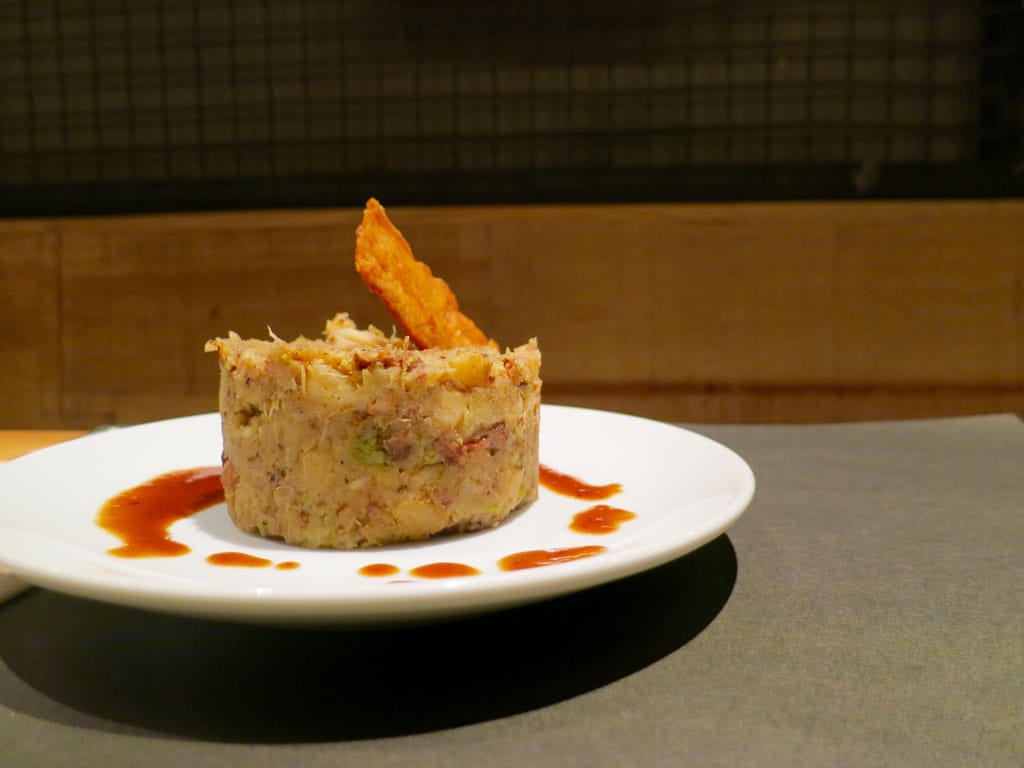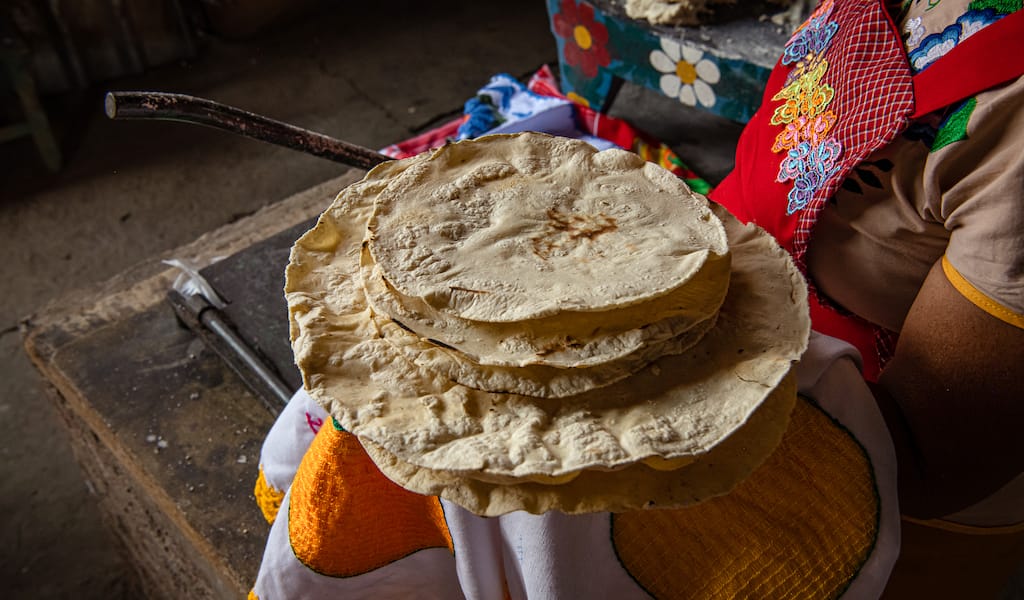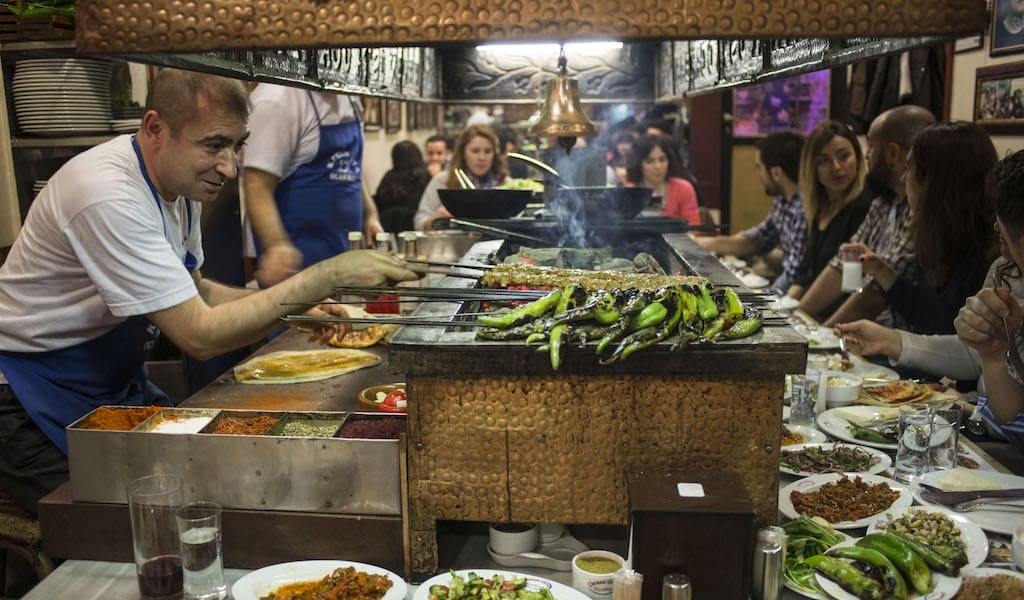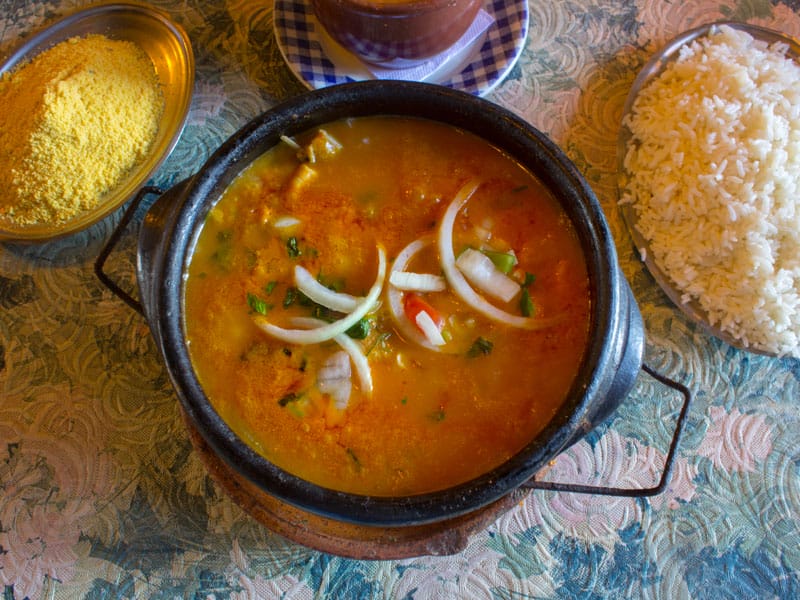Three humble ingredients – potato, cabbage and bacon – that’s all it takes to cook trinxat, the quintessential Catalan wintertime comfort dish. Potatoes and cabbage are boiled and mixed with fried bacon, and everything is cooked as a mash in a pan until it resembles a potato omelet. Its simple ingredients and even simpler preparation are exactly what make this dish so delicious.
The equivalent to the British bubble and squeak, trinxat means “chopped” or “shredded” in Catalan. The relatively high altitude of Andorra and the Catalan Pyrenees brought with it harsh winters, food shortages and long periods of isolation, so in the past, people living in the region had to come up with a recipe that could help them cope with the adverse conditions. Although there are officially just three main components, every bar, restaurant and household makes its own variation by adding extra ingredients to the original recipe, such as garlic, paprika, black pepper, wild mushrooms or other pork products besides the bacon. Trinxat’s presence on restaurant chalkboards advertising a menú del día is the unequivocal sign of the onset of winter in Catalonia.
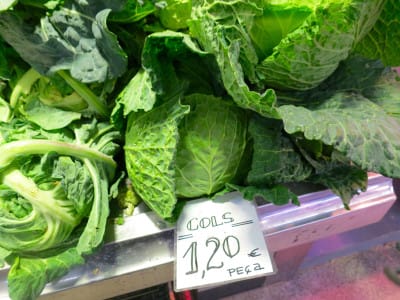 Oftentimes, the name of the dish on these menus is followed by the words de la Cerdanya, denoting the mountainous region in the eastern part of the Catalan Pyrenees that borders France, about 2 hours by car from Barcelona. Cerdanya trinxat is distinguished from all others by the region’s cabbage, which has an extraordinary resistance to cold weather. In fact, the best time to eat it is from mid-December until the end of winter, when the frost that covers it gives the vegetable optimal flavor.
Oftentimes, the name of the dish on these menus is followed by the words de la Cerdanya, denoting the mountainous region in the eastern part of the Catalan Pyrenees that borders France, about 2 hours by car from Barcelona. Cerdanya trinxat is distinguished from all others by the region’s cabbage, which has an extraordinary resistance to cold weather. In fact, the best time to eat it is from mid-December until the end of winter, when the frost that covers it gives the vegetable optimal flavor.
Every February, Puigcerdà, the capital of Cerdanya county, hosts a trinxat festival, a night when some 1,000 locals and visitors get together to dine on trinxat as well as other regional specialties, such as cheese, cold cuts and thyme soup. As a matter of fact, although Cerdanya’s most famous culinary contribution is unquestionably trinxat, other local specialties worth trying include peus de porc amb naps (trotters with black turnips), oca amb peres (goose with pears), pa de fetge (similar to pâté de campagne) and conill amb moixernons (rabbit with Saint George’s mushrooms).
In Barcelona, Por Sant’s splendid and very reasonably priced menú del día has attracted office workers from the Eixample area for more than 40 years. And one of the restaurant’s winter highlights, served by its cheerful waiter Francisco, is its trinxat. Owner Porcel Santacana believes the success of their trinxat is thanks to the fact that all the ingredients are sourced from the vegetable garden of his country house, in Santa Maria de Palautordera, a small town about an hour outside Barcelona. Por Sant’s is the classic, orthodox, grandmother-style trinxat. It is only offered once per week and always on a different day. But trinxat hunters need not panic, as Por Sant announces its daily menu options on its Twitter account.
Trinxat aficionados who cannot be bothered with the unpredictability of the menú del día at Por Sant can head just a few streets away to Butikfarra, a casual, yet quite stylish restaurant specializing in gourmet botifarra (Catalan pork sausage). Eduardo, Butikfarra’s chef, made room on his botifarra-themed menu for trinxat, and he offers it on a daily basis throughout the winter. His trinxat is salty and punchy and served with a superb homemade gravy that softens the flavor a bit.
Though trinxat is most popular in wintertime, one restaurant in Barcelona offers this dish year round: Bodega La Puntual, situated just opposite the Picasso Museum. Felipe, the chef, decided to give this Catalan classic dish his own twist by adding botifarra negra (pork sausage made with minced meat, blood and spices) to the mash and serving it with a fried egg on top, which certainly gives the right sweetness and creaminess to the hearty taste of the traditional trinxat.
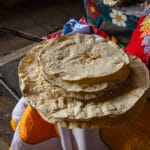 May 30, 2022 Building Blocks
May 30, 2022 Building Blocks
Every time we travel outside of Oaxaca, we get something we call “the tortilla blues.” […] Posted in Oaxaca September 14, 2017 Kenan Usta Ocakbaşı
September 14, 2017 Kenan Usta Ocakbaşı
If Istanbul had a city museum, in the 20th-century exhibition we’d expect to walk into a […] Posted in Istanbul May 21, 2015 Capitania dos Copos
May 21, 2015 Capitania dos Copos
Ilha do Governador (“Governor's Island”), the biggest island in Guanabara Bay, was a […] Posted in Rio
Published on March 11, 2016
Related stories
May 30, 2022
OaxacaEvery time we travel outside of Oaxaca, we get something we call “the tortilla blues.” Even if we move around inside of Mexico, particularly in the biggest cities, we cannot help missing the sweet aroma and feel of a warm tortilla almost melting in our hands. Sure, we might run into decadent tacos filled with…
Get close to the grill and the griller on our Kebab Krawl.
September 14, 2017
IstanbulIf Istanbul had a city museum, in the 20th-century exhibition we’d expect to walk into a life-sized recreation of Kenan Usta Ocakbaşı, a seminal grill joint in the Beyoğlu district. As visitors descended a few steps into the exhibition, sensors would trigger the harsh light of fluorescent bulbs overhead, illuminating a room covered in photographs…
May 21, 2015
RioIlha do Governador (“Governor's Island”), the biggest island in Guanabara Bay, was a popular weekend destination for many Rio inhabitants decades ago. In the 1980s, with the construction of the Rio International Airport on the island, the introduction of oil industry-related activities in the surrounding area and the beginning of a sad cycle of pollution…







































